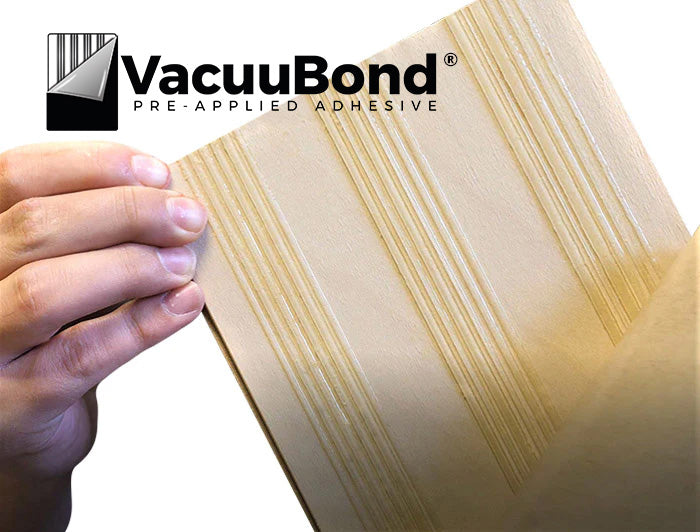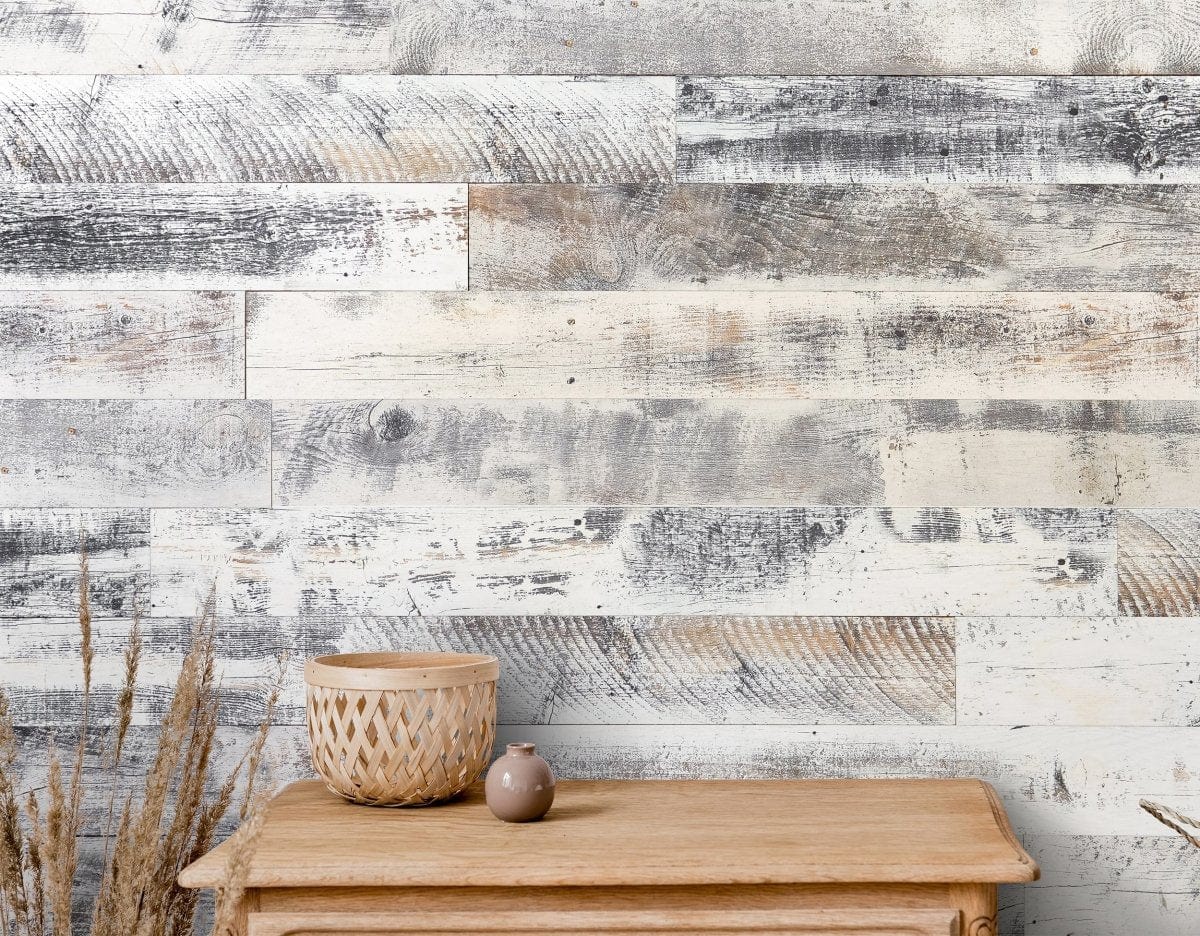Your Cart is Empty
Get your first 3 samples FREE! Use code: 3FREESAMPLES at checkout!
Get your first 3 samples FREE! Use code: 3FREESAMPLES at checkout!
Shop Products
What's Trending
Resources
Wallplanks® Blogs
The Best Top Coat Wood Finish
Pre-Applied Adhesive
Wallplanks® Blogs

View Blogs >
The Best Top Coat Wood Finish

Read More >
Pre-Applied Adhesive

Read More >
How to Soundproof a Room: The Ultimate Guide
September 06, 2024 5 min read

Soundproofing a room can transform your space, making it more peaceful, private, and functional. Whether you're trying to create a quiet office, a private bedroom, or a noise-free home theater, understanding how to soundproof a room effectively is key to achieving your goals.
Understanding Soundproofing
Before diving into the methods and materials, it's important to understand the basics of soundproofing. Soundproofing is the process of reducing or blocking sound from entering or leaving a space. This differs from sound absorption, which deals with reducing echo and improving sound quality within a space.
Sound Transmission vs. Sound Absorption
Sound transmission refers to the passage of sound through walls, floors, and ceilings, while sound absorption focuses on minimizing echoes and reverberation within the room. Effective soundproofing often requires addressing both aspects, especially in multi-purpose spaces.
Step 1: Identify the Noise Problem
The first step in soundproofing a room is identifying the type of noise you're dealing with. There are two main types:
Airborne Noise: This includes sounds like voices, music, and television noise that travel through the air.
Impact Noise: These are sounds like footsteps, furniture being moved, or any noise that results from physical contact with a surface.
Identifying the type of noise will help you choose the appropriate materials and methods for soundproofing.
Step 2: Addressing Air Leaks
Sound can easily travel through gaps and cracks in walls, doors, windows, and floors. One of the simplest and most effective ways to start soundproofing a room is by sealing these gaps.
Sealing Doors and Windows
Doors and windows are often the biggest culprits when it comes to sound leakage. Here's how to address them:
Weatherstripping: Apply weatherstripping around doors and windows to seal gaps. This will help reduce the amount of airborne noise entering or leaving the room.
Door Sweeps: Install door sweeps at the bottom of doors to close the gap between the door and the floor.
Acoustic Caulk: Use acoustic caulk to seal cracks or gaps around windows, door frames, and walls. It remains flexible and can better handle the vibrations from sound waves than regular caulk.
Step 3: Insulating Walls and Ceilings
To effectively soundproof a room, you must add mass to your walls and ceilings to block sound transmission.
Adding Mass to Walls
Mass-loaded vinyl (MLV) is a popular material for adding mass to walls. It's a dense, flexible material that blocks sound effectively. Here's how to use it:
Install MLV: Attach MLV directly to the studs or existing drywall using nails or screws. It's best to overlap the seams and seal them with acoustic tape.
Double Drywall: Another option is to install a second layer of drywall over the MLV. This adds even more mass, further reducing sound transmission.
Soundproofing Ceilings
For ceilings, consider adding mass with drywall or using sound isolation clips:
Drywall and Green Glue: Apply a layer of Green Glue, a sound-dampening compound, between two layers of drywall on the ceiling. This helps to absorb and dissipate sound waves.
Sound Isolation Clips: Attach sound isolation clips to the ceiling joists, then add resilient channels and a new layer of drywall. This method decouples the drywall from the structure, reducing impact noise transmission.
Step 4: Soundproofing Floors
Floors can be a significant source of impact noise. To reduce this, consider the following methods:
Use of Carpeting and Rugs
Soft materials like carpets and rugs can help absorb sound, especially impact noise from footsteps. Here's how to make the most of them:
Thick Carpets: Invest in thick, plush carpets for rooms where noise is a concern. Adding a carpet pad underneath can further enhance sound absorption.
Area Rugs: If carpeting isn't an option, use large area rugs with dense fibers to cover hard surfaces.
Floating Floors
For more serious soundproofing, consider installing a floating floor:
Interlocking Floor Mats: These mats are made of dense materials like rubber or cork and can be installed directly over your existing floor. They help to decouple the surface from the structure, reducing sound transmission.
Underlayment: Installing a soundproofing underlayment beneath your flooring can significantly reduce impact noise. Materials like cork, rubber, or foam work well for this purpose.
Step 5: Soundproofing Windows
Due to their nature, windows are one of the most challenging areas to soundproof, but effective strategies are available.
Acoustic Windows
Acoustic windows are specially designed to block out sound. They are made with thicker glass and a layer of air or gas between the panes that dampen sound waves.
Window Inserts
If replacing windows isn't feasible, consider window inserts:
Acoustic Window Inserts: These are clear panels that fit snugly inside your existing window frames. They can reduce noise by up to 70% without altering the appearance of your windows.
Heavy Curtains
Another option is to use heavy, soundproof curtains:
Blackout Curtains: These thick, insulated curtains not only block out light but also help to reduce sound. Hang them as close to the window as possible for maximum effect.
Step 6: Soundproofing Doors
Solid-core doors are much better at blocking sound than hollow-core doors. Here's how to enhance door soundproofing:
Upgrade to Solid-Core Doors
If your budget allows, replacing hollow-core doors with solid-core doors can make a significant difference in reducing noise transmission.
Door Seals and Sweeps
As mentioned earlier, adding door seals and sweeps is essential for preventing sound from leaking through the gaps around your doors.
Acoustic Panels
For an additional layer of soundproofing, consider adding acoustic panelsto the doors:
Adhesive Panels: These panels can be attached directly to the door's surface to help absorb sound and prevent it from passing through.
Step 7: Adding Sound Absorption Materials
While soundproofing focuses on blocking sound, adding sound absorption materials helps improve the room's acoustics. This is particularly important for rooms like home theaters or recording studios.
Acoustic Panels and Foam
Acoustic panels and foam are effective at absorbing sound waves and reducing echo:
Wall Panels: Install acoustic panels on the walls, especially in areas where sound waves are likely to reflect. They come in various colors and designs and can also enhance the room's aesthetics.
Bass Traps: Place bass traps in the corners of the room to absorb low-frequency sound waves, which are often the most difficult to control.
Soft Furnishings
Incorporating soft furnishings into your room can also help with sound absorption:
Heavy Drapes: Use heavy drapes or curtains to cover large windows.
Furniture: Upholstered furniture like sofas and chairs can absorb sound and reduce echo.
Pillows and Throws: Add pillows, throws, and other soft accessories to further enhance sound absorption.
Shop Wallplanks Today!
Soundproofing a room can dramatically enhance your living experience, whether you want to create a peaceful retreat, an efficient workspace, or a high-quality home theater. The key to successful soundproofing lies in addressing sound transmission and absorption using the right materials and techniques.
At Wallplanks, we understand the importance of creating a serene and functional space. Our wall planks are not only visually stunning but also contribute to soundproofing your room by adding an extra layer of insulation and mass to your walls. We are proud to be a U.S. company based in Weston, Wisconsin, founded by industry expert Tryggvi Magnusson in 2017. Our commitment to quality and sustainability is evident in every product we create. All our materials are sourced from North America, ensuring you receive only the best for your home.
Explore our collection of beautiful, high-performing wall products today and transform your room into the ultimate soundproofed sanctuary.

